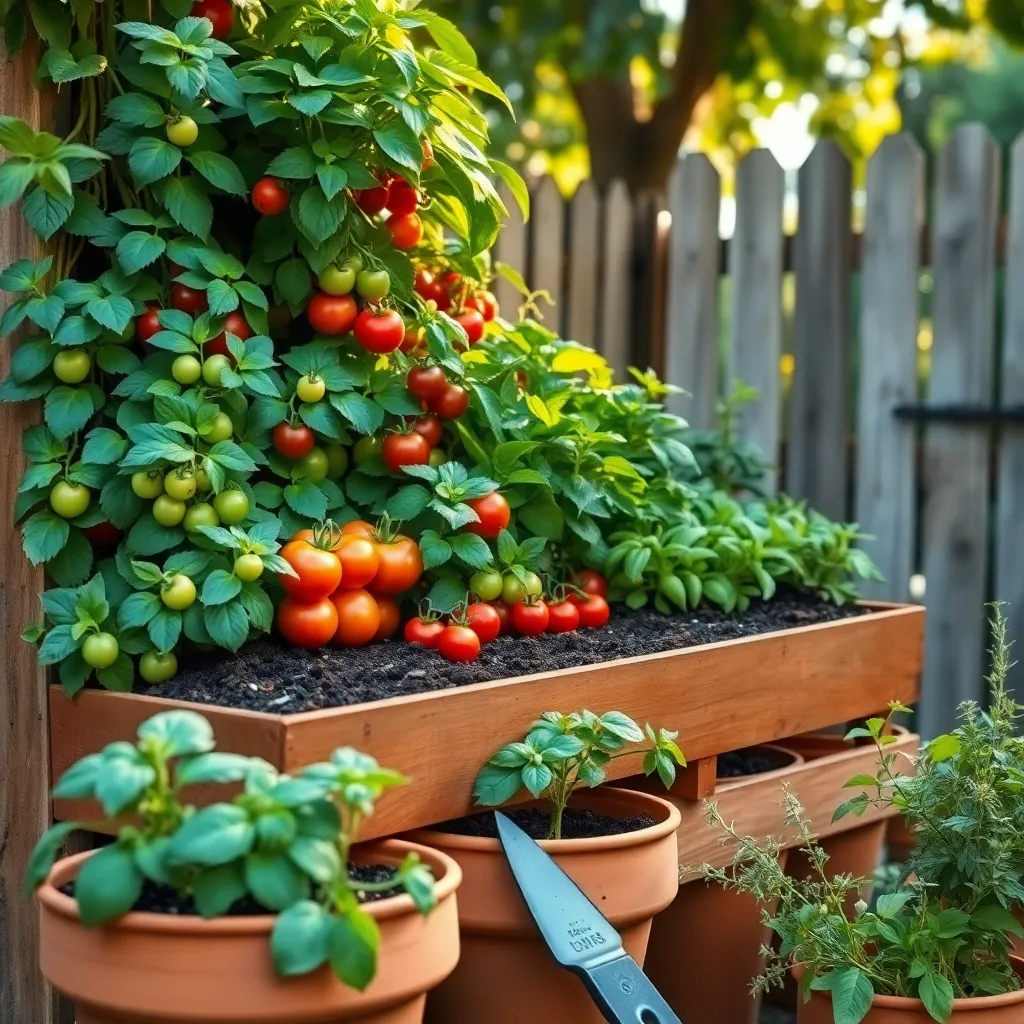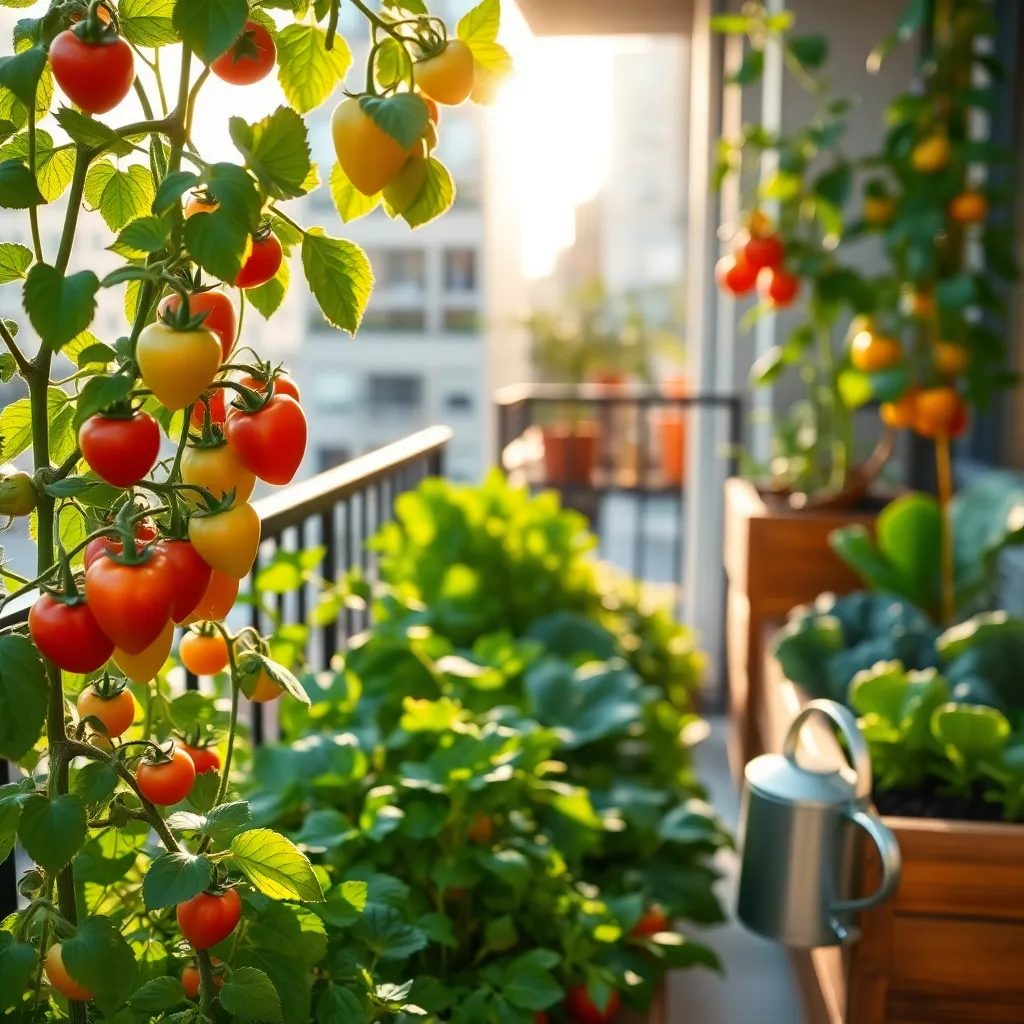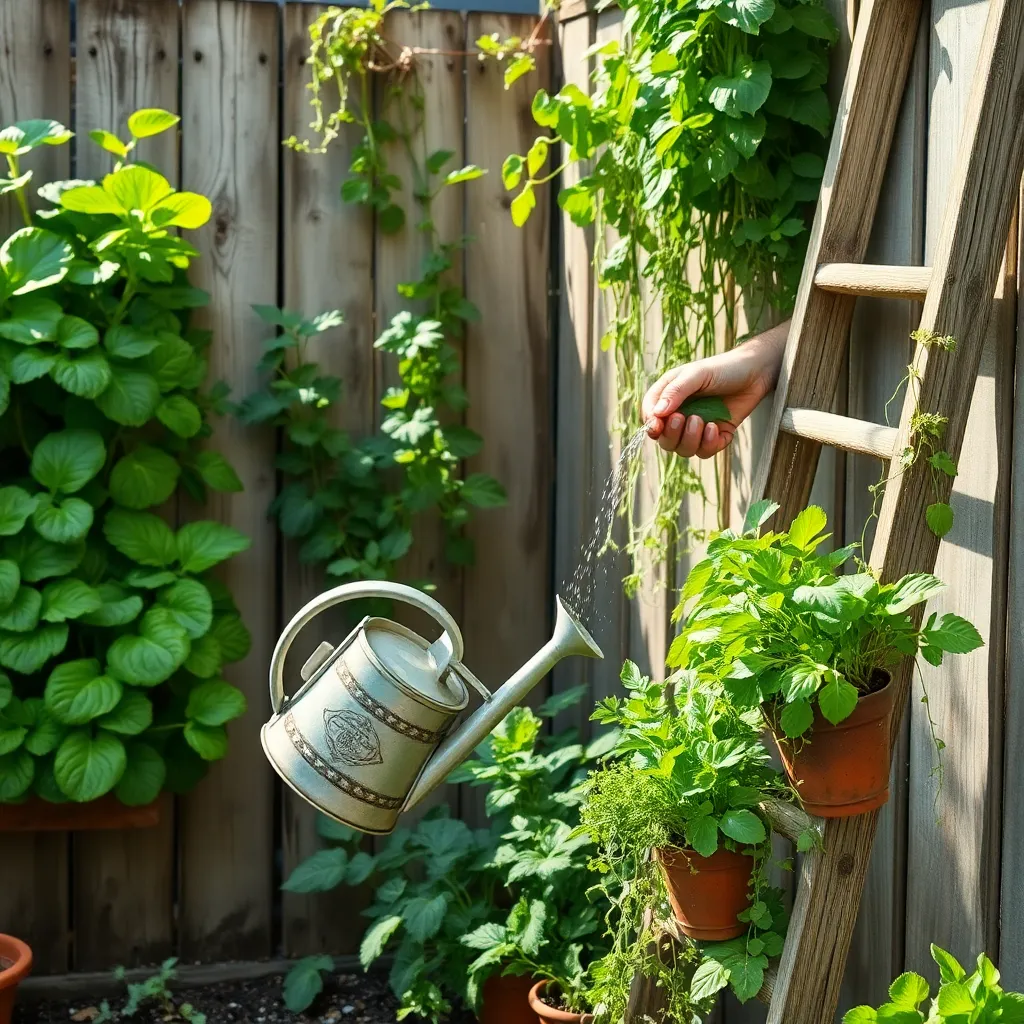In the heart of bustling cities and small backyards alike, the dream of growing fresh, delicious vegetables doesn’t have to be confined by space. Whether you’re just starting your gardening journey or have years of experience, the art of small-space vegetable gardening can be both rewarding and surprisingly productive. As urbanization continues to rise and our living spaces shrink, the importance of learning to maximize every inch of your garden becomes increasingly crucial. This article will guide you through innovative and efficient techniques to transform limited areas into lush, fruitful havens.
Imagine harvesting crisp lettuce or juicy tomatoes from your balcony or a cozy corner of your patio. You’ll discover that with the right approach, even a small plot can yield a bountiful harvest. We’ll delve into the nuances of container gardening, vertical growing, and smart plant selection to help you make the most of your space. Together, we’ll explore creative solutions that ensure your vegetables thrive, regardless of the square footage you have to spare.
For beginners, this journey is an invitation to embrace the joys and challenges of nurturing your own food, while seasoned gardeners will find fresh inspiration to refine their craft. From understanding soil quality to mastering watering techniques, you’ll gain practical skills that will elevate your small-space gardening game. Prepare to turn your compact garden into a powerhouse of productivity, as we unlock the secrets to planting vegetables with confidence and flair. Your small space is about to become a vibrant testament to the power of nature and your growing expertise.
Select Compact Vegetable Varieties

When gardening in small spaces, selecting compact vegetable varieties can make a significant difference. Opt for dwarf or bush types of common plants, such as tomatoes, cucumbers, and peppers, which are bred to thrive in confined areas.
Many seed companies offer varieties specifically labeled as “compact” or “patio,” which are ideal for containers or small garden beds. These plants generally require less spacing and can still yield a bountiful harvest if provided with the right conditions.
Soil quality is crucial for compact vegetable varieties, as they have limited space to spread their roots. Use a high-quality potting mix rich in organic matter to ensure adequate drainage and nutrient availability.
For optimal growth, maintain a consistent watering schedule, especially for container-grown plants that can dry out quickly. Water your compact vegetables deeply but less frequently to encourage strong root development and reduce the risk of overwatering.
Advanced gardeners can experiment with vertical growing techniques to maximize space further. Using trellises or cages for plants like cucumbers and beans can increase yield without expanding your garden’s footprint.
Prepare Space-Efficient Containers

To make the most of your small gardening space, choose containers that maximize soil volume without taking up unnecessary room. Opt for vertical planters, hanging baskets, or stackable pots to utilize vertical space effectively, ensuring each container has good drainage holes.
The material of your container matters—selecting the right one can impact plant health. Containers made from materials like ceramic or fabric allow better air circulation, while lightweight plastic pots are easy to move and rearrange.
When preparing your containers, fill them with a high-quality potting mix that retains moisture yet drains well. Consider adding a slow-release fertilizer to the mix to provide consistent nutrients over time, giving your plants a healthy start.
For those with more experience, consider creating a self-watering system to further improve water efficiency. This can be achieved by using a double-pot system where the outer pot holds water, allowing the inner pot to absorb moisture as needed.
Optimize Soil with Quality Mix

For thriving vegetable gardens in small spaces, optimizing soil with a quality mix is crucial. Start with a base of good-quality potting soil, which provides essential nutrients and ensures proper drainage, critical for container gardening.
Mix in organic matter such as compost or well-rotted manure to enrich the soil. These additions improve soil structure and boost its ability to retain moisture, which is particularly important in compact areas where roots can quickly dry out.
Incorporating a slow-release fertilizer can further enhance the nutrient profile of your soil mix. This step supplies a steady flow of nutrients, ensuring your vegetables have everything they need to grow robustly throughout the season.
For those seeking to optimize even further, consider adding perlite or vermiculite to the mix. These elements improve aeration and prevent soil compaction, a common issue in small-space gardens.
Position Plants for Maximum Sunlight

To ensure your vegetables thrive, positioning them for maximum sunlight is essential. Most vegetables require at least six to eight hours of direct sunlight each day to grow well and produce abundantly.
Begin by observing the sun patterns in your garden space throughout the day. This will help you identify the sunniest spots, which are ideal for planting sun-loving vegetables like tomatoes, peppers, and cucumbers.
If your available space lacks direct sunlight, consider using reflective materials. Placing reflective surfaces like mirrors or white-painted walls nearby can help redirect sunlight onto your plants, increasing their light exposure.
For advanced gardeners, consider employing vertical gardening techniques to maximize sunlight exposure. By using trellises or vertical planters, you can elevate your plants, ensuring they catch more sunlight while saving space below for other crops.
Implement Vertical Growing Techniques

Utilizing vertical growing techniques can significantly maximize your gardening space, especially in small areas. By encouraging plants to grow upwards, you can free up ground space and create a lush, layered garden environment.
Start by selecting vegetables that naturally thrive in vertical arrangements, such as tomatoes, peas, and cucumbers. These plants can be easily trained to climb using supports like trellises, cages, or stakes.
For successful vertical growing, ensure that your support structures are sturdy and securely anchored. Using materials like metal or treated wood can provide long-lasting durability, supporting heavier yields as your plants mature.
Watering vertically grown plants requires some attention, as water tends to drain more quickly from elevated setups. Consider installing a drip irrigation system or watering more frequently to ensure consistent moisture, especially during hotter months.
Advanced gardeners might experiment with vertical hydroponic systems, which can optimize space while providing precise nutrient delivery. This method requires a bit more setup but can yield impressive results with vegetables like lettuce and herbs.
Conclusion: Growing Success with These Plants
In exploring the art of cultivating vegetables in small spaces, we uncovered five key relationship concepts vital for nurturing both gardens and connections: communication, adaptability, patience, shared goals, and resourcefulness. Just as in gardening, open communication sets the foundation, ensuring that all needs and preferences are understood. Adaptability allows us to embrace change and adjust to new circumstances, while patience reminds us that growth takes time. Shared goals create unity and purpose, while resourcefulness helps us make the most of what we have.
As your next step, consider dedicating time this week to discuss a shared project or goal with your partner, just as you would plan a garden layout. This not only strengthens your bond but also ensures you’re working together towards a common objective.
Don’t forget to save this article for future reference; it’s a handy guide to nurture both your garden and relationship. By integrating these principles into your daily life, you’re setting the groundwork for lasting success and fulfillment in your relationships. Embrace the journey with warmth and optimism, knowing that with effort and care, both your garden and your relationships will flourish beautifully.
